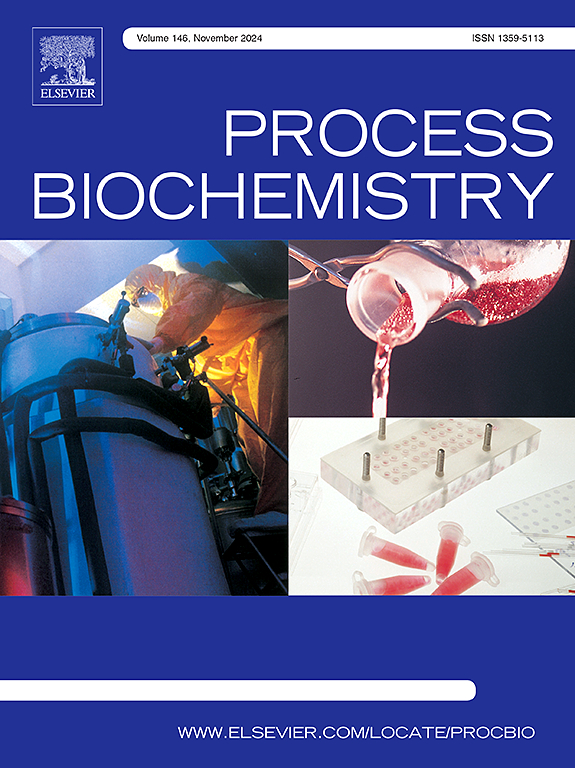深度学习引导大肠杆菌信号肽诱变
IF 4
3区 生物学
Q2 BIOCHEMISTRY & MOLECULAR BIOLOGY
引用次数: 0
摘要
信号肽(SPs)在蛋白质分泌中起着至关重要的作用,但其在生物工程中的应用仍然受到环境依赖功能、宿主特异性和遗传稳定性的限制。本研究提出了一种基于深度学习模型的大肠杆菌信号肽的合理诱变策略,并识别出耐突变变异体。首先,我们使用SignalP 6.0生成了438个信号肽序列。通过对信号肽的n端、疏水区(h区)和c端序列进行系统修饰,我们恢复了h区存在的高突变耐受性。在7个高耐突变信号肽中,来自YjdP蛋白的SP22_54表现出优异的稳健性,在广泛突变后仍能保持功能。进一步分析表明,功能性SP突变体始终保持疏水氨基酸含量,并具有最小电荷特性。SP_r1突变体有效介导人碳酸酐酶II (hCAII)的分泌。已确定的突变耐受性序列决定因素为生物技术应用中的合理信号肽设计提供了有价值的见解,提高了跨不同表达系统的重组蛋白生产的可靠性和成本效益。本文章由计算机程序翻译,如有差异,请以英文原文为准。
Deep learning guided mutagenesis of signal peptide in Escherichia coli
Signal peptides (SPs) play critical roles in protein secretion, yet their application in bioengineering remains limited by context-dependent functionality, host specificity, and genetic stability. This study presents a rational mutagenesis strategy for signal peptides in Escherichia coli under deep learning model and identifies the mutation-tolerant variants. At first, we generated 438 signal peptide sequences using SignalP 6.0. Through systematic modification of N-terminal, hydrophobic regions (H-region), and C-terminal sequence of signal peptide, we retrieved the high mutation tolerance existing in H-region. Among seven high mutation-tolerant signal peptides, SP22_54 from YjdP protein demonstrated exceptional robustness, maintaining functionality after extensive mutations. Further analysis revealed that functional SP mutants consistently preserved hydrophobic amino acid content with a minimal charge property. The SP_r1 mutant effectively mediated secretion of human carbonic anhydrase II (hCAII). The identified sequence determinants of mutation tolerance provide valuable insights for rational signal peptide design in biotechnological applications, enhancing reliability and cost-effectiveness of recombinant protein production across diverse expression systems.
求助全文
通过发布文献求助,成功后即可免费获取论文全文。
去求助
来源期刊

Process Biochemistry
生物-工程:化工
CiteScore
8.30
自引率
4.50%
发文量
374
审稿时长
53 days
期刊介绍:
Process Biochemistry is an application-orientated research journal devoted to reporting advances with originality and novelty, in the science and technology of the processes involving bioactive molecules and living organisms. These processes concern the production of useful metabolites or materials, or the removal of toxic compounds using tools and methods of current biology and engineering. Its main areas of interest include novel bioprocesses and enabling technologies (such as nanobiotechnology, tissue engineering, directed evolution, metabolic engineering, systems biology, and synthetic biology) applicable in food (nutraceutical), healthcare (medical, pharmaceutical, cosmetic), energy (biofuels), environmental, and biorefinery industries and their underlying biological and engineering principles.
 求助内容:
求助内容: 应助结果提醒方式:
应助结果提醒方式:


